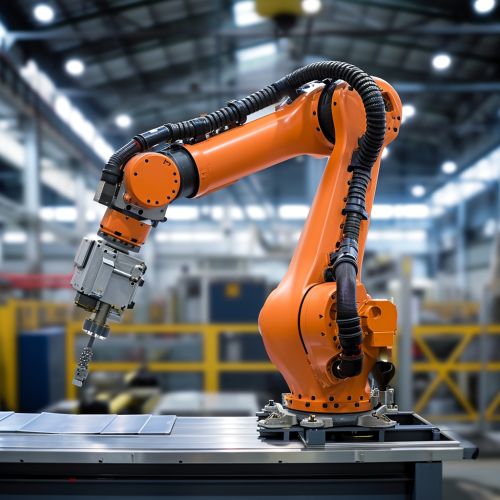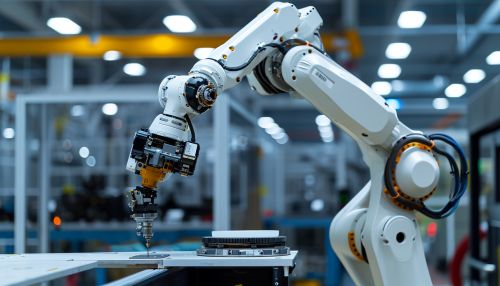Robotics as a Service
Overview
Robotics as a Service (RaaS) is a model of delivering robotic solutions and services over the internet. This model allows businesses to use robotic services without the need for upfront capital investment, similar to the concept of SaaS. RaaS is a part of the larger concept of XaaS, where various services are delivered over the internet.


History
The concept of RaaS emerged with the advent of cloud computing and the proliferation of IoT devices. As robotics technology advanced, the cost of implementing and maintaining robotic systems became a significant barrier for many businesses. The RaaS model emerged as a solution to this problem, allowing businesses to access robotic services on a subscription basis, reducing the need for large upfront investments.
Business Model
RaaS operates on a subscription-based model, where customers pay a recurring fee to access robotic services. This model allows businesses to scale their use of robotics based on their needs, providing flexibility and cost-effectiveness. The RaaS provider is responsible for maintaining and updating the robotic systems, reducing the burden on the customer.
Applications
RaaS has a wide range of applications across various industries. In manufacturing, RaaS can be used for tasks such as assembly, packaging, and inspection. In logistics, RaaS can be used for warehouse automation, including picking and packing, and transportation. In healthcare, RaaS can be used for tasks such as surgery, patient care, and rehabilitation.
Benefits
RaaS offers several benefits over traditional robotics implementation. These include cost-effectiveness, scalability, flexibility, and access to the latest technology. By eliminating the need for upfront capital investment, RaaS makes robotics accessible to a wider range of businesses. The subscription model allows businesses to scale their use of robotics based on their needs, providing flexibility. Furthermore, as the RaaS provider is responsible for maintaining and updating the robotic systems, customers always have access to the latest technology.
Challenges
Despite its benefits, RaaS also presents several challenges. These include issues related to data security, network reliability, and integration with existing systems. As RaaS relies on the internet to deliver services, any disruption in network connectivity can affect the performance of the robotic systems. Furthermore, as robotic systems collect and process large amounts of data, ensuring data security is a critical concern.
Future Trends
The RaaS market is expected to grow significantly in the coming years, driven by advancements in robotics technology and the increasing adoption of cloud computing. Key trends in the RaaS market include the increasing use of AI and machine learning in robotic systems, the proliferation of IoT devices, and the increasing demand for automation in various industries.
